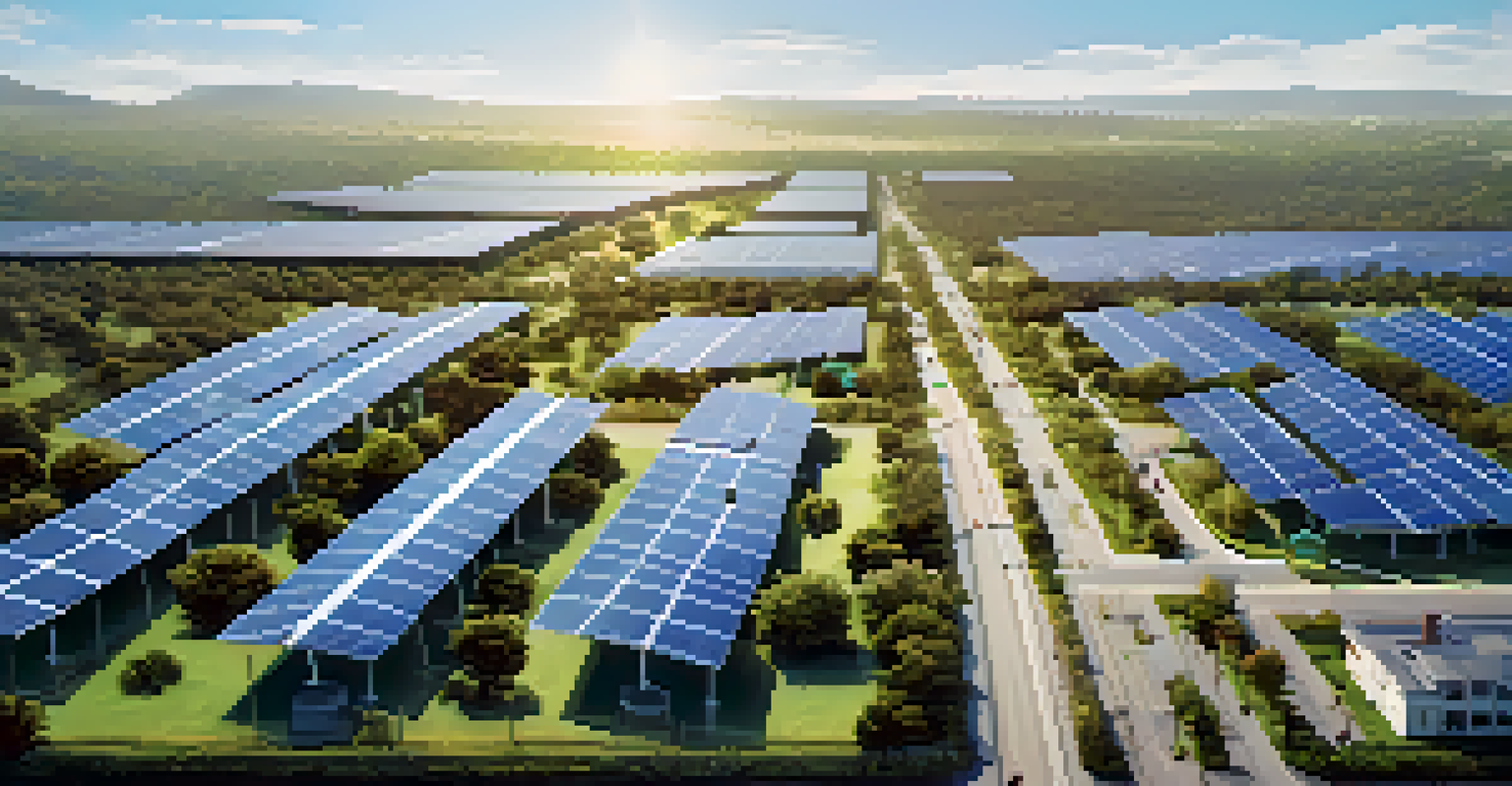The Connection Between Infrastructure and Economic Resilience

Understanding Economic Resilience in Today's World
Economic resilience refers to the ability of a community or economy to withstand and recover from setbacks. This can include natural disasters, economic downturns, or global crises. Essentially, it's about bouncing back stronger and maintaining stability in the face of challenges.
Resilience is not about how much you can handle before you break, it's about how much you can endure after you break.
In a world where uncertainties are common, having a resilient economy is crucial. It ensures that businesses can thrive despite external pressures and that communities can support their members through tough times. The foundation of this resilience often lies in robust infrastructure.
Infrastructure plays a vital role in supporting economic activities. From transportation networks to communication systems, these structures enable businesses to operate efficiently and connect with their customers. Without this backbone, economies struggle to respond to shocks and adapt to new realities.
The Role of Infrastructure in Economic Stability
Infrastructure is more than just roads and bridges; it encompasses utilities, transportation, and digital networks. Each of these components contributes to a stable economic environment. For instance, reliable transportation systems allow goods to move quickly, reducing costs and increasing efficiency.

When infrastructure is well-maintained, it leads to increased business productivity and, ultimately, economic growth. Think of it like a well-functioning machine: each part must work harmoniously for the whole system to operate effectively. If one part fails, the entire operation can be jeopardized.
Moreover, strong infrastructure attracts investment. Investors are more likely to put their money into regions with dependable utilities and transport options, leading to job creation and economic development. This creates a positive feedback loop that strengthens the economy even further.
Infrastructure and Community Resilience
Communities with robust infrastructure are often better equipped to handle crises. For instance, during a natural disaster, well-planned evacuation routes and emergency services can save lives and minimize damage. This not only protects residents but also speeds up recovery efforts.
Infrastructure is the backbone of any economy; without it, growth is stunted and resilience is compromised.
A resilient community is one where residents can quickly adapt to changes and challenges. Infrastructure plays a crucial role in this adaptability. Access to resources, such as clean water and reliable energy, ensures that communities can function even during tough times.
Additionally, strong infrastructure fosters social cohesion. When people have access to public spaces, transportation, and services, it enhances their quality of life and encourages community interaction. This sense of belonging can be a powerful tool in overcoming adversity.
Investment in Infrastructure: A Path to Resilience
Investing in infrastructure is not just about immediate gains; it's about long-term resilience. Governments and private sectors must recognize that infrastructure projects can provide stability during economic downturns. By prioritizing these investments, they lay the groundwork for a more resilient future.
For example, consider renewable energy infrastructure. Investing in solar or wind energy not only supports environmental goals but also creates jobs and reduces dependence on fossil fuels. This multifaceted approach strengthens the economy while addressing global challenges.
Furthermore, smart infrastructure investments can lead to innovation and technological advancements. As cities modernize their infrastructure, they can integrate smart technologies that improve efficiency and responsiveness, ultimately enhancing economic resilience.
Digital Infrastructure: The New Backbone of Resilience
In today's digital age, infrastructure extends beyond physical assets to include digital networks. High-speed internet access and robust cybersecurity measures are now essential for economic resilience. Businesses rely on these tools to operate efficiently and remain competitive.
During the pandemic, those with strong digital infrastructure were able to pivot quickly, adopting remote work and online services. This adaptability showcased the importance of investing in digital assets, as they became lifelines for many businesses and communities.
Moreover, digital infrastructure enables better data collection and analysis, which can inform decision-making. When communities understand their needs better, they can tailor infrastructure investments to promote resilience and growth.
Challenges in Building Resilient Infrastructure
While the benefits of resilient infrastructure are clear, challenges remain. Funding is often a significant hurdle, as governments compete for limited resources. Prioritizing which projects to invest in can be a complex decision, especially when immediate needs often overshadow long-term goals.
Additionally, climate change poses a unique challenge to infrastructure planning. As weather patterns become more unpredictable, infrastructure must be designed to withstand extreme conditions. This requires innovative solutions and collaboration between various stakeholders.
Finally, there’s the challenge of maintaining existing infrastructure. Aging roads, bridges, and utilities require regular upkeep to prevent failures. A proactive approach to maintenance can save money and enhance resilience over time.
The Future of Infrastructure and Economic Resilience
Looking ahead, the future of infrastructure is likely to be shaped by sustainability and technology. Communities that invest in green infrastructure not only prepare for climate challenges but also create jobs and stimulate economic growth. This dual focus can lead to a more resilient economy.
Emerging technologies, such as smart cities and IoT (Internet of Things), are also set to revolutionize infrastructure. These technologies can improve efficiency, reduce waste, and enhance the quality of life for residents, ultimately contributing to economic resilience.

As we navigate an increasingly complex world, the connection between infrastructure and economic resilience will only grow stronger. By prioritizing thoughtful investments in infrastructure today, we can build a resilient tomorrow for communities and economies alike.